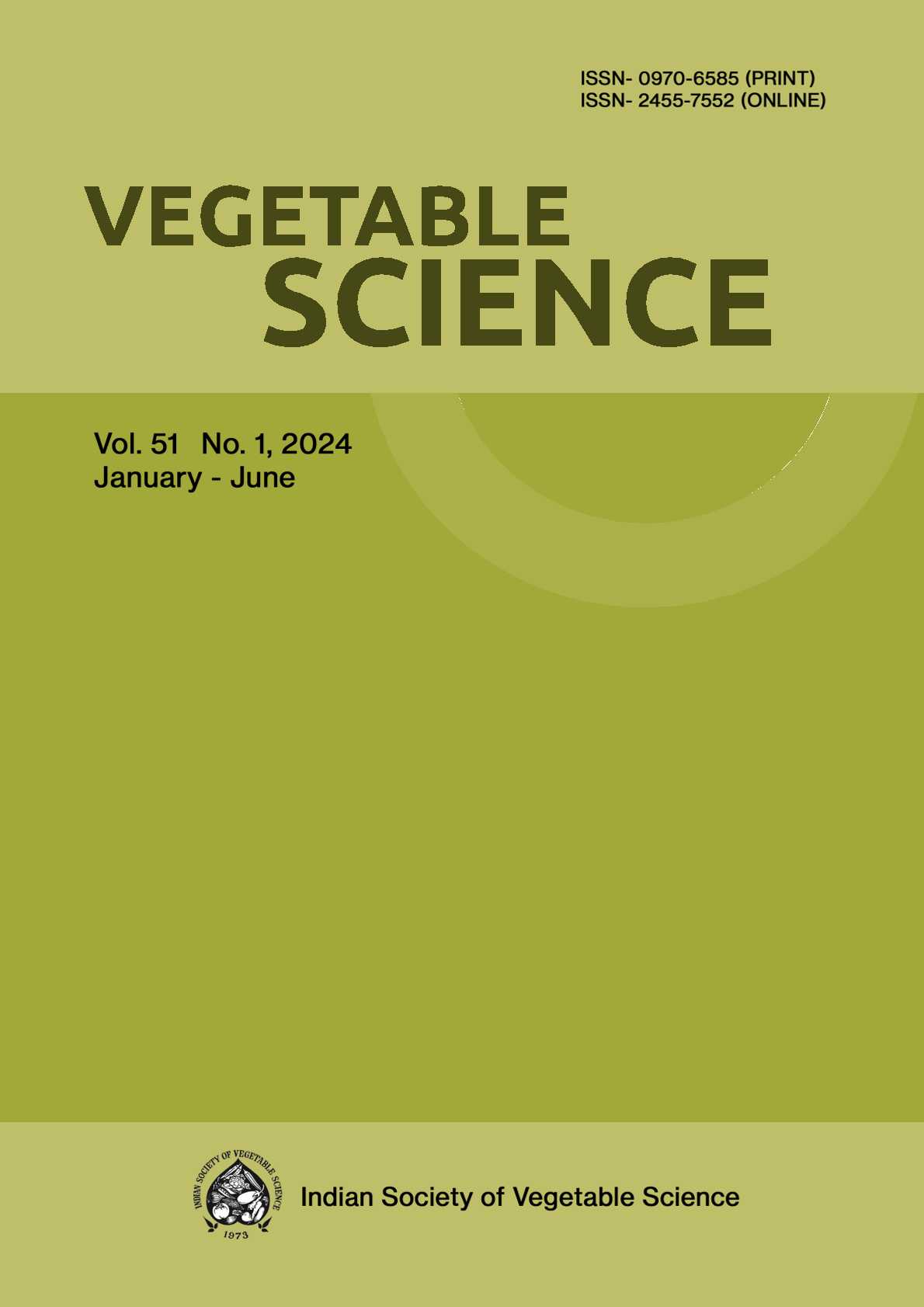Evaluation of chili genotypes for yield and yield attributing traits in two contrasting Indian environments
DOI:
https://doi.org/10.61180/vegsci.2024.v51.i2.06Keywords:
Capsicum annuum L, Genetic advance, Heritability, Genotypic coefficient of variation, Phenotypic coefficient of variation, yield.Abstract
Capsicum annuum L., commonly known as chili, holds global significance as a widely cultivated species for both culinary and spice purposes. This study sought to identify high-yielding chili and bell pepper varieties adaptable to diverse environments. Twelve genotypes were assessed for seven qualitative and six key quantitative yield-related traits under contrasting conditions: ICAR-IARI, New Delhi, and ICAR-RCER Research Center, Ranchi, Jharkhand utilizing a Randomized Block Design (RBD) with three replications. Pooled Analysis of Variance revealed significant variations among genotypes and between locations for all quantitative traits. Notably, plant height, fruit width, fruit length, days to 50% flowering, days to maturity, and yield exhibited high Genotypic Coefficient of Variation (GCV) and Phenotypic Coefficient of Variation (PCV), coupled with significant heritability and genetic advance. Arka Meghana emerged as the superior genotype under both environmental conditions, displaying the highest fruit length (10.9 cm at Ranchi and 10.6 cm at New Delhi), maximum yield per plant (0.650 kg/plant at Ranchi and 0.57 kg/plant at New Delhi), and the shortest days to 50% flowering (40.6 days at Ranchi and 47 days at New Delhi). These findings contribute valuable insights for optimizing Chili and Bell pepper cultivation practices to enhance yield and quality traits under diverse environmental contexts.
Downloads
Published
Issue
Section
License

This work is licensed under a Creative Commons Attribution-NonCommercial-NoDerivatives 4.0 International License.






